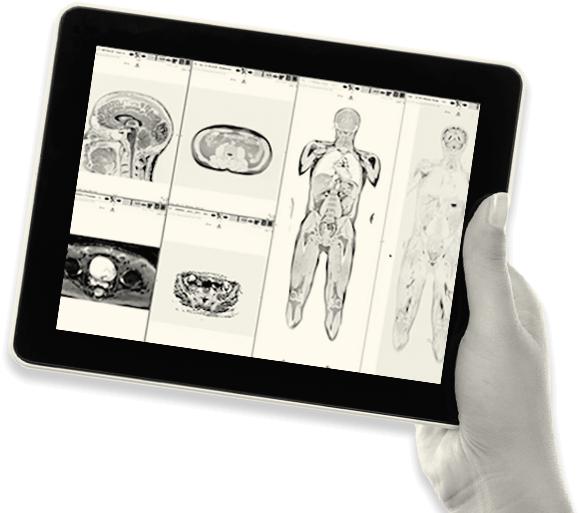Transcript
The Future of Preventative Healthcare
Soundbites:
TOM: For us to live longer, healthier lives preventative healthcare is paramount
GUEST David Sinclair (01:13)
At the heart of us making the most of long lives is prevention and an investment in prevention.
TOM: and it doesn't just save lives, it boosts our economy
3:04
Vaccination is one of the most cost effective public health interventions available. It accrues returns on investment at an individual, a health system, and an economic and societal level.
TOM: And there is so much more we should be doing to ensure our preventative arsenal is accessible to adults around the world"
Murray 08:37
"Bringing greater awareness and education about the ongoing need for preventive services such as vaccinations is important and really does need to be a public health priority"
TOM
I'm Tom Parker, and welcome to the next five podcast brought to you by the FT partner studio. In this series, we ask industry experts about how their world will change in the next five years, and the impact it will have on our day to day. This episode looks at healthcare prevention in ageing societies, focusing on vaccination uptake in a post pandemic world as well as other local, national and international preventative healthcare strategies.
MUSIC FADE AND BREATHE
TOM: In the 13th century a Latin saying proclaimed 'It is better and more useful to meet a problem in time than to seek a remedy after the damage is done.’
But it was another couple of centuries before the Dutch philosopher Erasmus coined the catchier version we all know, “prevention is better than cure” - still a fundamental principle of modern healthcare.
And ever since 1796, when Dr Edward Jenner inoculated an 8 year old boy against smallpox with a vaccine containing the milder strain cowpox, vaccination has become a part of the preventative medicine armoury. An immunisation programme since the 1950s has nearly eradicated Polio while vaccines have drastically lowered the impact of many other diseases. Benefits go beyond the health of the individual by reducing the cost and burden placed on health care systems and society.
kate
01:55
For GSK now, there is an incredible amount of energy on prevention and prioritizing prevention.
TOM: This is Kate Hashey, Global communications and Government Affairs lead for adult immunisation at GSK.
And as we look at our health care systems, they are focused on the reactive. They're really sick care systems. We see that only around 3% of total health care spending is dedicated to prevention across wealthy countries, meaning that people live with diseases that could have been prevented or controlled earlier.
kate (23:23.206)
When we look broadly at prevention and prioritizing prevention, for every dollar that is invested in improving health, there's an economic return of two to $4 that is possible.
kate (00:34.498)
when we think about public health interventions, next to clean drinking water, vaccination is one of the most important interventions that we have
and has had dramatic impacts on both lifespan and health span of individuals, which really then helps us have healthier, more resilient communities and economies.
Vaccination is one of the most cost effective public health interventions available. It accrues returns on investment at an individual, a health system, and an economic and societal level. We know that vaccination against common infectious diseases has been shown to dramatically improve human health and the quality of life across the lifespan. What we see with pediatric, childhood immunization all the way through to adult immunization. And in some cases, vaccination can reduce the risk of hospitalization, for instance, by half and death by a third. So pretty significant in terms of that impact on a global level.
TOM: The COVID -19 pandemic put a fresh spotlight on vaccines - highlighting the need, but also in some instances the ambivalence towards them. It was, and continues to be, the biggest global vaccination case study and is providing us with key insights that could help create better preventative policies in the future.
kate (11:43.63)
One of the biggest lessons that we learned is just how significantly an infectious disease can impact our health and the economy. Health is critical to socioeconomic resilience. And we really need to think about this as two sides of the same coin. And that's why it's so important now coming out of the pandemic, and really thinking about even as we have continued waves of COVID, how do we prioritize vaccination? How do we prioritize prevention? So we're setting ourselves up not only from an individual and a community level from a health perspective, but also from that socioeconomic perspective.
kate (13:53.206)
And I think one of the things that we can also take from the pandemic is just how important trust is within communities. And we saw during the pandemic, good and bad of policy trying to keep pace with both science in terms of the vaccine's development and deployment and eventual uptake. And it was continuously adapted by scientists, healthcare providers, policymakers, and I think sometimes those changes were really unsettling for people because they want clarity. They want consistency on what's happening and what they should be doing. The other big piece of it is, you know, during the pandemic, vaccines were developed, scaled in terms of their manufacturing and deployed in record time. So from an access perspective,
new kinds of ways to get vaccines to people were deployed. So like mass vaccination clinics, vaccination in pharmacy, the way educational campaigns were done to make sure people had information, really incredible energy and investment going into making sure that message got out there. I think where we are now, there's a lot of talk about COVID fatigue, vaccine fatigue, and that's why it's more important than ever that we think about ways that we can embed this prevention mindset, a life course immunization mindset, So people do this as part of their behavior, health systems are set up in a way that's straightforward and simple. And it's just part of that standard of care like we see for pediatric immunization. because the next pandemic we will have or the next crisis we will have, we will be in a better place because we made those investments to reinforce that healthcare infrastructure or that education and that trust.
06:38
TOM: By 2030, the number of people age 60 and over is going to increase by more than a third to 1.4 billion people. Even with the lessons learnt from the pandemic, low adult immunisation remains a global problem. According to the IQVIA Institute for Human Data Science, in the past decade the global uptake of adult vaccines for major diseases excluding covid, whilst low overall, was on an upward trajectory. It peaked at around 400 million doses in 2020. But in the following two years 100 million fewer doses were administered, a 12 percent drop across the period.
Murray Aitken (00:46.41)
We've been engaged for some time now, looking at some of the issues around adult vaccination rates.
TOM: This is Murray Aitken, Executive Director of the IQVIA Institute for Human Data Science.
Murray Aitken
There are a number of factors that seem to be driving this decline
Murray Aitken
So some of these issues relate to the access of vaccines, issues of reimbursement and the cost of receiving vaccines is also clearly a factor that influences the extent of vaccine use. But I think there's also softer issues around the community level focus on public health on prevention, on building awareness and indeed educating the adults in that area and their caregivers about the importance of vaccinations and the positive impact that they can bring to healthcare.
There has been some level of backlash against the COVID-19 vaccine programs.Those factors we need to understand better and we need to address them.
And in that context, I think bringing greater awareness and education about the ongoing need for preventive services such as vaccinations is important. It really does need to be a public health priority. And our call is to ensure that post pandemic we return to the level of focus and activity on these preventive services through vaccinations that we saw over the last few years.
TOM: IQVIA’s study looked at key cities across the world, pooling granular data together to highlight what needs to be done to improve vaccine uptake in adults based on hyperlocal factors that are either contributing to or inhibiting vaccinations in certain communities.
In the work that we've been doing, we've recently focused on five cities around the world, Belgium, Bangkok, Manchester, Chicago, and New York City. These are geographically diverse cities. Four of them are part of the global network for age-friendly cities. And this is a program that is really being led out of the WHO and the United Nations, which has brought a greater focus to a number of different adult related factors that make cities and communities more attractive to those populations. And in that context, healthcare is an important part of it. In these age-friendly cities, we do see more of a focus on adult vaccinations and helping to support increasing the level of immunisation. In parts of Manchester, in parts of Chicago, and even in parts of Bangkok, we see substantially higher levels of vaccines being undertaken. Part of the reason for that is locally driven, community-based efforts to build awareness to ensure that vaccination points exist and to reduce the barriers that otherwise prevent individuals from receiving the benefits of immunization.
Murray Aitken (37:02.514)
What we saw most clearly in the data is that once you get beyond the issues of vaccination policy and recommended vaccines, as well as reimbursement for those vaccines, the most critical factor is the number of vaccination points that exist within a city or within an area. That's what makes the difference in terms of convenience.
for those who would benefit from the vaccines. And it's very clear that the more vaccination points you have within an area, the higher the level of vaccination. So that is something that I think every policymaker, every public health official really needs to zero in on and think about what can be done to ensure that the number of vaccination points is optimal for supporting
the population in a particular area.
TOM: Child vaccination programs have set a successful standard for immunisation globally, eradicating horrific diseases and protecting the most vulnerable. While great lessons can be taken from childhood immunisation, creating a successful adult vaccination campaign, alas, offers different barriers that need to be overcome.
Murray Aitken (16:53.962)
Historically, vaccination programs have been very much focused on children. And indeed, the global success of those efforts to bring childhood vaccination around the world has been truly remarkable and indeed, has significantly moved the needle in reducing child mortality. So it's clear that we have been very successful in healthcare systems globally.
at bringing childhood vaccinations to those who will benefit from them. Over time, more recently, we've had a greater focus on adult vaccinations.
Murray Aitken (18:57.298)
While flu vaccinations have been a part of the public health landscape for a long time, in more recent years, we've had newer vaccines,become available with remarkable clinical profiles with great benefits to adults. And now we're at a period where we have a lot more work to do to build awareness about the availability of those vaccines, awareness for patients. We also need to make sure that healthcare professionals are aware of what's available, and begin to work these into their routine engagement with their patients. At the same time, making these vaccines for adults available conveniently is very important to reach the over 60 population. We need vaccination points in places where adults go, where they work, where they socialize, where they spend their time. We need transportation to enable people to get to vaccination points. That's an important consideration. So there's a different set of factors that we need to be thinking about with respect to adults that are very different in fact from what's required for childhood immunization.
Tom: While vaccine barriers exist in adult and elderly populations, there is still room for optimism. If we get adult vaccination and prevention policies right, society as a whole can reap huge benefits.
David Sinclair (01:13)
At the heart of us making the most of long lives is prevention and an investment in prevention.
.
Tom: This is David Sinclair, Chief Executive Officer at the International Longevity Centre in the UK, a leading authority on the impact of longevity on society.
David Sinclair (07:07.)
Our economy depends on it as well as other societal benefits of investing in that prevention
For us, for ILC in the UK, our job is to convince policy makers to engage on the evidence around what works and who's doing best and how we can learn from who's doing best. So we launched a healthy ageing and prevention index that allows us to compare how 121 countries are doing and what we found was that countries that invest in prevention and immunisation are higher up our index.
TOM:
The ILC’s index ranks the 121 countries against six indicators: life span, health span, work span, income, environmental performance, and happiness. Essentially it compares the extent to which each government is investing in preventing ill health and supporting healthy ageing.
So the UK is 17th in our table. If you look compared to places like the US, which is into its 30s, you could say we're doing very, very well. Places I think we should be aspiring in the short run to get up to places like Canada, which are 11th in our table. Canada spends 6% of their healthcare budgets on prevention and it has an extraordinarily positive impact
David Sinclair (31:01)
Since increasing its spending on health promotion and preventative health to 6%, Canada has seen a fall in avoidable mortality from 150 for every 100,000 people to 116 people for every 100,000 people. So it worked.
David Sinclair (15:25.169)
the UK is about 3%. It could absolutely be up to 6%.
David Sinclair (31:37)
For the UK, reaching this target would require a £2.7 billion investment, which is just 4% of the £60 billion spent on COVID measures, and it could have a huge economic benefit if we were to do so.
If we increase preventative health spending by just 0.1 percentage points, we can unlock, for example, a 9% increase in average spending by older people. We also know that people who report being in good health rather than poor health are over four times more likely to be in work in their 50s and 60s and over 10 times more likely if they're aged between 65 and 74.
Our global healthy aging and prevention index shows that countries that spend a higher proportion of their health budgets on prevention perform better on the index. Canada is an outlier in doing particularly well, but
David Sinclair (31:01.589)
We think it's really important that governments across the world spend 6% of their health budgets on preventative health measures, particularly as we build back from the challenges inflicted by the Covid pandemic.
TOM: While the evidence is there that prevention is better than cure, there are inequalities, even in the UK, that exist and need to be addressed.
David Sinclair (02:58.477)
While in the UK and in places like Manchester, we have one of the highest rates of uptake of flu vaccine amongst adults and older people, there aren't many years where we meet the World Health Organization's target of 75% uptake.
And yet in many countries across the world, we're heading in the wrong direction. Poor health is driving falls in life expectancy in the UK. And poor health is being driven by preventative mortality. For example, 40% of ill health and premature mortality in England is linked to preventable factors. Preventable conditions amongst those aged 50 to 64 in the UK cost $27 billion a year.
And it's not just the UK, G20 economies lose more than a trillion a year from preventable health diseases. So if we're going to make the most of long lives, we've got to invest in prevention. As a result of our failure to invest in prevention, there are real significant inequalities emerging. Average healthy life expectancy, for example, of people living in Blackpool is around 55 years, the equivalent of the average in Angola. So we've got a lot to do in terms of addressing those inequalities.
TOM: With better standardised, equitable and easily accessible vaccine innovations, we could help to transform our current ‘sick care’ system to a truly preventative led ‘healthcare’ system. But this is a complex task. To see a more prominent preventative healthcare system we need the right collaboration and incentives over the next five years.
Murray Aitken (21:15.626)
So we're very optimistic about the outlook for the next five years in terms of bringing immunization to adults for diseases that otherwise have very significant healthcare consequences. The clinical evidence of the benefits of adult vaccination are very clear and compelling. We need to bring that evidence forward, make sure that it is broadly understood
patients themselves, by their families, their caregivers, their children, their healthcare professionals. We need to shine a bright light here because this is one of the areas of healthcare where we can have the greatest impact with vaccines that are already available. The scientific investment in bringing these vaccines.
through development and through regulatory review has been done. Of course, there's even more vaccines in development, but we have a lot to work with. We need to realize the benefit of those vaccines and as many people as possible and as quickly as possible. In that context, getting the evidence out there about the positive impact of adult vaccinations
health outcomes, building the awareness of where we are in terms of the level of immunization being achieved in different countries around the world, within countries at a specific city level, and even within a city at a local neighborhood level. Bringing that evidence forward we think is a very effective way to shine the spotlight on what's going on.
Where are we doing well? Where can we do better? Where can we allocate resources differently in order to improve the trend line? That's what we're enthusiastic about. The tools are there, the tools exist. We need to harness those. We need to share them across all the stakeholders that need to be on the same page around this. With that being done, I think we have a very optimistic view of how things will play out over the next five years.
kate
so looking at the next five years, I'm very optimistic,
Kate 2
So significant advances in science and technology mean that we're better placed than ever to get ahead of disease. So new technologies such as adjuvants and maps are helping us create vaccines against viruses and bacteria that have eluded scientists for decades.
Kate 2
And advances in our understanding of genetics means that we have the potential to identify predictors of disease and intervene earlier. So one of the biggest contributions that we can make to preventions is through vaccines we develop at supply. Beyond vaccines, really we make prevention a focus across our pipeline and our portfolio, not only to prevent disease in the first place, but to intervene earlier to help change the course of disease.
In infectious diseases as well as chronic diseases, we are looking to prevent or slow the progression of illness and long-term complications. And then just lastly, societies are aging, bringing more complex health needs and increasing pressure on health systems and economies. So to get ahead of these challenges, we really need to focus on prevention.
Kate 2
So what I'm hoping to see in the next five years is really this transformation take shape from sick care to really true healthcare. With the advent of new technologies and new vaccine innovations, we really have to make sure that policy keeps up with the innovation. So making sure people can access these innovations and stay healthy. That is the reason why they're developed in the first place. And I'm really optimistic that we can get there, but we really need to push on shifting political will, making it a necessity now and not just a problem of the future.
Kate 14:07
We've had tremendous success in pediatric immunization around the globe, eliminating disease in many, many places. And that's muscle memory, right? Like what we do, the behavior that we have, the prioritization, the policies to make sure kids are immunized is always front and center. And what I really want to see is that we take that mindset and that ambition across the life course so that new vaccine innovations are utilized and get to the people that they're developed for to prevent disease, but to make the same behavior consistent across the life course. So we are really setting ourselves up for healthy aging.
David Sinclair (24:39.498)
so there's loads of reasons to be positive over the next five years about the potential of vaccination and prevention to keep us healthier for longer.
David Sinclair (21:59.385)
So the UK's recently introduced a vaccine strategy, which is extraordinarily positive, that includes points around how you engage in terms of older adults, but across the life course. The UK's vaccine strategy, for example, looks to use technology in the way that we've been calling for a long time, to increase uptake. So for example,
We developed in the UK alongside COVID, a really simple to use, good system for booking vaccines appointments, for booking your COVID vaccines. Having that at a national level really makes sense. Letting people book vaccines online is one of the things we could do. So I think that there, for the next five years, I think that what we can expect is improvements in the technology, a real greater interest in how you maximise uptake and a real focus of public policy on this because it's worth saying that there is increasing recognition from policymakers about the importance of prevention to the economy and if we are to deliver the economic benefits of long lives we have to prevent. So in other words, politicians and policymakers are going to have to do it because there is an economic return for doing so. And what we need to do is engage individuals to make people want to prevent more, prevent ill health more. One of the big drivers around prevention is likely to be the workforce in the UK. So we have a huge challenge in the UK where we're predicting a 2.6 million shortage of workers over the next five or six years simply because of demographic change. We have over a million people aged between 50 and 64 who are not in work but want to be working and that is being driven by poor health. So policymakers have an absolute incentive to get vaccination and get prevention working and
If we invest in prevention, if we invest in immunisation, people work more, they spend more, they volunteer more, they care more. And they end up higher on our index of countries that are adapting better to long lives. It's a win-win for governments and we've got to invest more and I'm confident that will happen.
TOM OUTRO:
121 years ago the American inventor Thomas Edison said ‘The doctor of the future will give no medication but will interest his patients in the care of the human frame, diet and in the cause and prevention of disease.’ Edison was right in theory but it’s still not been fully realised in practice. In the wake of the COVID-19 pandemic, the global healthcare sector has been pushed to reevaluate its priorities and resilience. However, treatment is still prioritised over prevention. As Kate mentioned, we are still in a sick care system but desperately need to switch to a true health care one. While Medications will continue to be critical tools in healthcare we must not remain solely reactive. Vaccines are an important part of the preventative playbook, but to realise the potential, lessons need to be learnt from the pandemic and successful immunisation programmes in children. Barriers still exist, especially with adult vaccination, be it trust, accessibility, reimbursement and awareness. Combating these requires collaborative, engaging and future looking public policies. Get it right and the benefits are clear; not only can vaccines and early intervention improve health outcomes, it can help in wider socioeconomic ways too. The evidence is there, so are the incentives, all of which offer encouraging stimulus to all. Now collective action just needs a shot in the arm.




























































